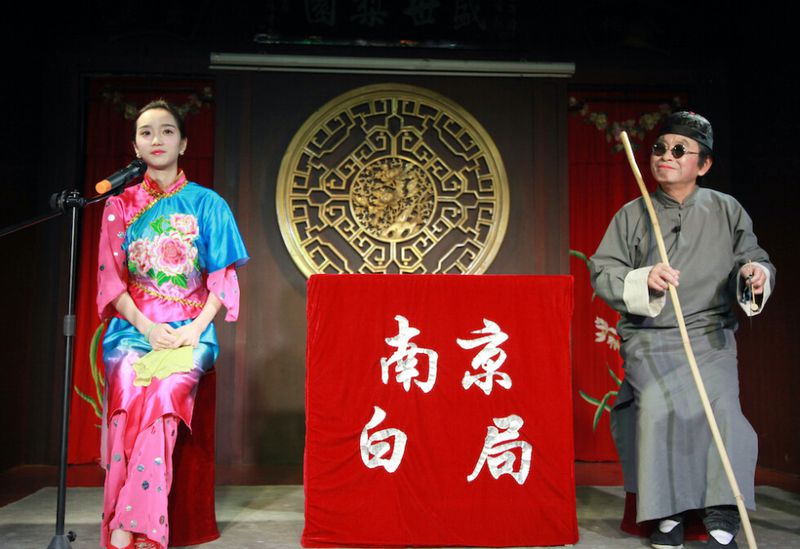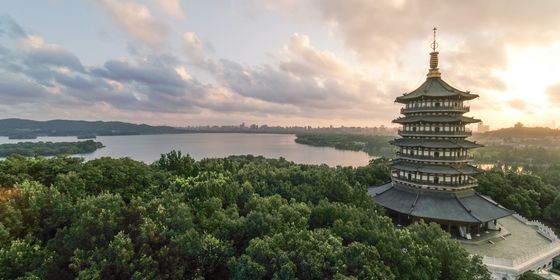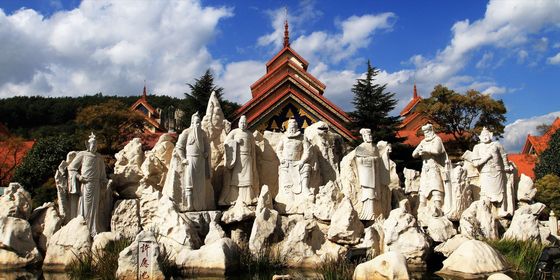For centuries, Nanjing dialect was considered standard Chinese
For over a decade, The World of Chinese has been offering modern Chinese-language instruction from street talk to social phenomena to character tales. With 129 officially recognized dialects (方言), though, we have barely scratched the surface of everything there is to learn.
On select Fridays, TWOC will be presenting a basic lesson on speaking like a native of a certain region of China.
According to the early 20th century historian and economist Zhu Xie, “Of all the four ancient Chinese capitals, none compares to Jinling when it comes to literary prosperity, celebrated individuals…and its connection with the struggles and progress of the nation.”
Though the ancient city is now known as Nanjing, and demoted from being the nation’s capital to the capital of Jiangsu province, it continues to be revered for its long history as the economic, cultural, and political center of China. The southern burg is now known for its important historical sites, well-preserved ancient architecture, and rich cuisine—as well as a unique dialect that can sound either elegant or down-to-earth as the occasion demands.
Nanjing is deeply influenced by the wider Jiangnan culture in the fertile plains south of the Yangtze River, which was a prospering commercial hub in ancient times. The Wu dialect (which also encompasses the speech of Shaoxing and Shanghai) had become prevalent in this region by the time of the Western Jin dynasty (265 – 317), with the Nanjing variety distinguished by its soft pronunciation, similar to the dialect spoken in today’s Suzhou.
During a series of rebellions and invasions from northern tribes during the fourth and fifth centuries, the imperial household of the Jin relocated from the northern “Central Plains” to the Jiangnan region, and declared Nanjing as their new capital. Han culture and dialect migrated with them, creating a unique cultural mix as well as the “Jinling Formal Speech (金陵雅言),” which became the official language of the Jin.
Nanjing dialect, or Nankinese, was considered “standard” Chinese all the way up until the Qing dynasty (1616 – 1911), when the Yongzheng Emperor changed the official language to the Beijing variant. When China was split between the Northern and Southern dynasties (420 – 589), Nanjing was revered as a bastion of Han culture in contrast to the “barbarian” northern tribes, and the language was considered the purest of China’s dialects. During the Sui (581 – 618), Tang (618 – 907), and Song (960 – 1279) dynasties, official texts on correct pronunciation and languge use all took Nankinese as the model.
Nanjing also served as the capital during the Ming dynasty (1368 – 1644) and the Republic of China. The local dialect was even exported abroad: In Japan, Nankinese was taught as standard Chinese from the Edo period (1603 – 1868). Early missionaries from the US to China also learned it as the official language.

Nanjing baiju is a genre of oral storytelling performed in Nanjing dialect, usually in a teahouse
Today, Nankinese shares much in common with standard Mandarin, and may be easier for those speakers to understand than other Wu dialects. There are some important differences, however:
- Tone shifts: When a third-tone word is followed by a first-tone word, the first word is changed to a second-tone. For example, “teacher,” 老师 (lǎo shī) in standard Mandarin, is pronounced “láo sī,” and “Guangdong” (广东 Guǎng dōng) is pronounced as “Guáng dōng.”
- The nasal “ng [ŋ]” sound is often lost in Nankinese. Old-timers pronounce “Beijing (北京 běi jīng)” as “bèi jin,” and “pinwheel (风车 fēng chē)” as “fēn cher” (unlike most southern dialects, traditional Nankinese is known for the rhotic erhua sound at the end of words).
- The “n” and “l” sounds are often mixed. For example, “Nanjing (南京 nán jīng)” is pronounced as “lán jīn,” and “grandmother (奶奶 nǎi nai)” becomes “lǎi lai.”
- Some unique Nanjing expressions include: “troublesome (犯嫌 fàn xián),” “young lad (小杆子 xiǎo gǎn zi),” “young girl (潘西 pān xī),” “sleep (挺尸 tǐng shī),” “strong relationship (恩正 èn zhēn),” and “very (一塌带一抹 yí tà dài yí mà).”
Some classic Nankinese expressions are as follows:
1.啊要辣油啊?
Á yào là yóu a?
How about some chili oil?
This question is a typical one when taking a meal in a Nanjing restaurant. “啊” in Nankinese serves as an interrogative particle, used at both the beginning and end of the question. The phrase “Have you eaten yet? (啊吃过啦?Á chī guò là?)” is constructed in the same way.
2. 今天去哪怪子啊?
Jīn tiān kì nǎ guài zi a?
Where will you go today?
Besides “have you eaten yet?”, this sentence is one of the most frequently used greetings between Nanjingers.
3. 乖乖, 来斯了嘛!翅膀硬了啊是啊?
Guāi guai, lái si le ma! cìbāng èn le a shì a?
Wow, did you think you did a good job? It seems that you can do it on your own?
This sentence is used to criticize someone for showing-off. 翅膀硬了, literally “your wings are hard,” implies arrogance. Often said by elders to children, or by superiors to their subordinates.
4.给犯嫌啊?癔怪死的了!
Géi fàn xián a? yìguài sǐle!
Who are you troubling? So disgusting!
A phrase to express anger at someone’s behavior.
5. 带快点个子害!忙不及了!
Dài kuài diǎn gòu zi hai!máng bù jí le!
“Hurry Up! There’s no time!”
Though Jiangnan culture is usually renowned for leisure, this phrase is often used by Nanjingers in a hurry.
All Images from VCG













